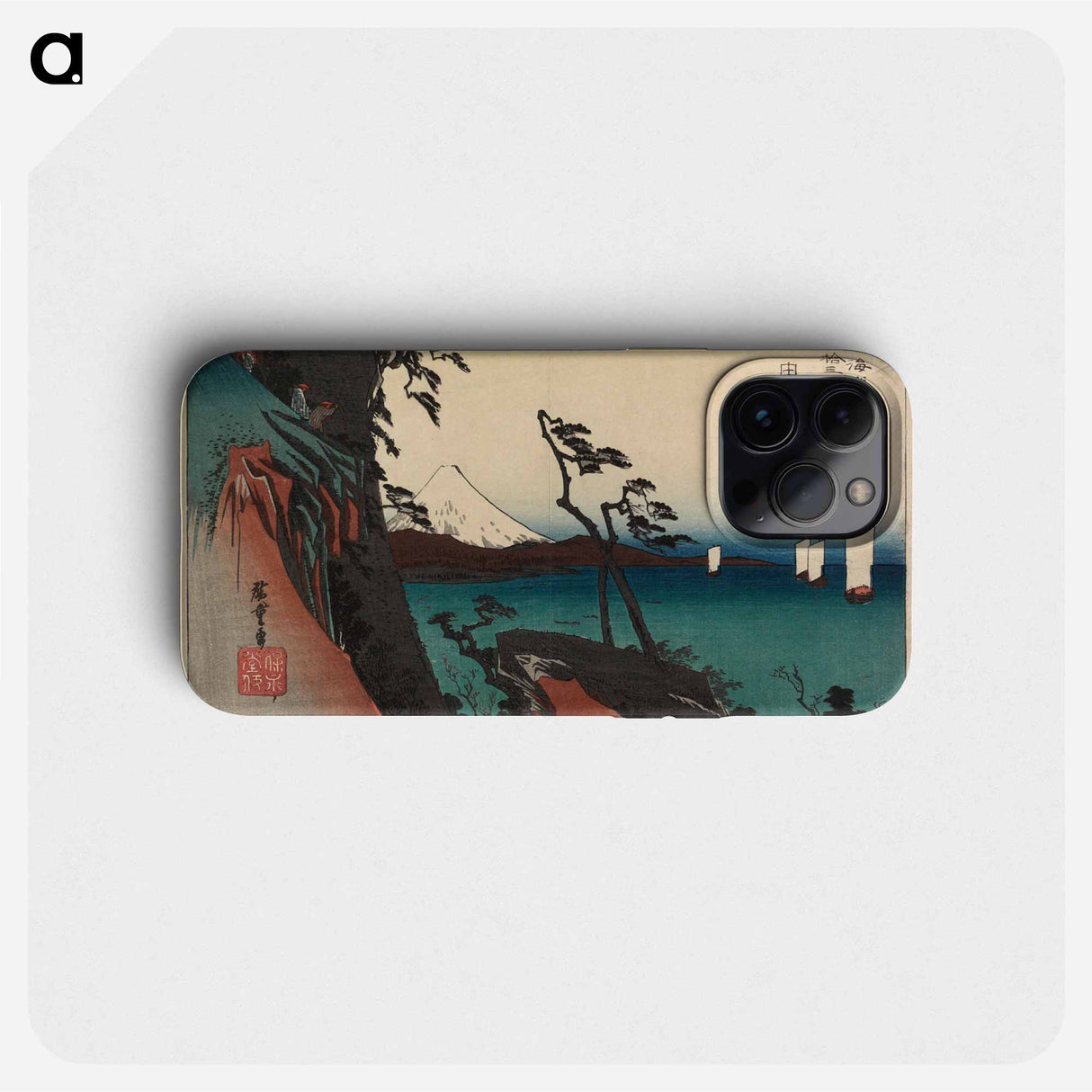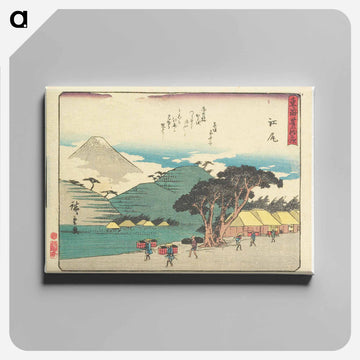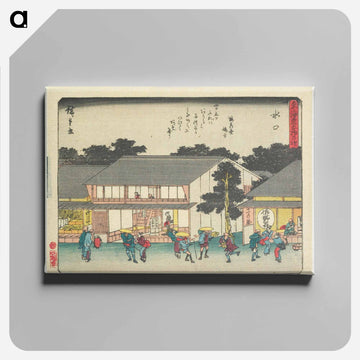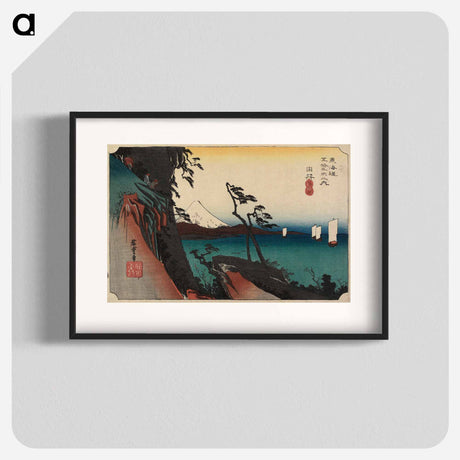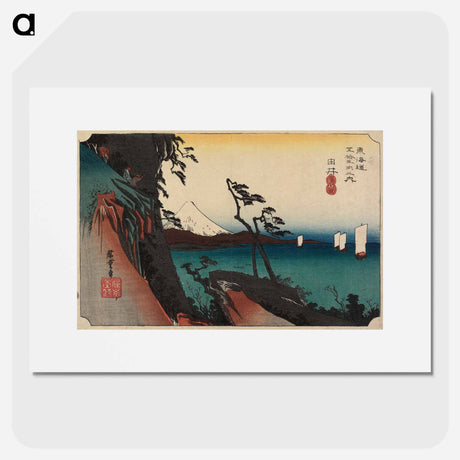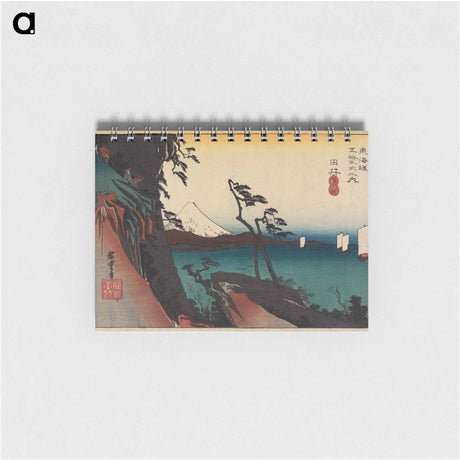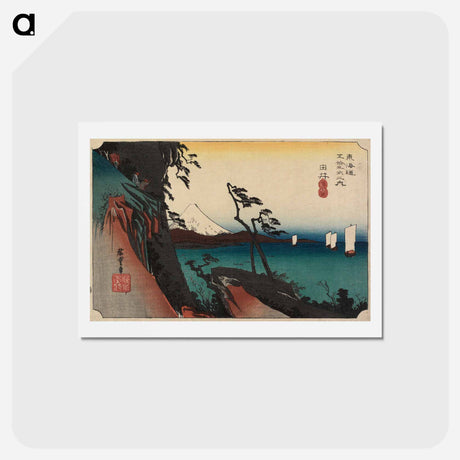Yui, Satta-mine - 歌川 広重 Phone Case.
Yui, Satta-mine - 歌川 広重 Phone Case. - iPhone 17 is backordered and will ship as soon as it is back in stock.
【出荷予定について】
※土日祝定休
製品説明
製品説明
artgraph.オリジナルの名画のスマートフォンケース
●隅々までこだわりのデザイン
側面やカメラの周りなど細かいところまでしっかりプリントされた全面印刷タイプのスマホケースです。アートが映えるように機種ごとに構図を調整しています。
※商品画像は中央配置したサンプルです。機種の縦横比によって原画の切り取り位置が異なりますので、ご不安な方はお手数ですがあらかじめお問い合わせください。
※一部全面になっていませんがお届け時には人の手で印刷位置を調整します。
※印刷範囲のズレやトリミング位置の変更により、外側のイメージに欠損が発生する場合がございます。
●上品な仕上げ
光沢をカットしたマットな質感は大人っぽいシックな印象を与え、さらさらとした手に馴染む心地よい触り心地です。
●落としても安心
耐衝撃性に強いポリカーボネート素材を使用しております。軽くてスリムながら大切なスマホをしっかり守ってくれます。
※上下の側面部分にはカバーは付いておらず、充電ケーブルやイヤホンなどの差し込みがスムーズに行えるデザインです。
| 作品名 | Yui, Satta-mine (由井 薩埵嶺) |
| 作家名 | Utagawa Hiroshige(歌川 広重) |
| 制作年月日 | |
| 関連キーワード | 歌川広重 日本美術 広重 19世紀 美術 アジア アジア美術 1832年頃~1833年 イラスト 歌川広重 あ行 日本 浮世絵 19世紀 レトロ 和風 アート スマートフォンケース スマートフォンケース Xperia AQUOS Galaxy iPhoneケース iPhone16 iPhone15 iPhone14 iPhone13 12 Pro mini iPhone11 iPhoneSE 第4世代 第3世代 第2世代 インテリア おしゃれ 絵画 絵 名画 風景画 風景 雑貨 ヴィンテージ レトロ 玄関 リビング ダイニング 寝室 台所 トイレ 玄関などご自身用にも、モデルルーム、オフィス、事務所、お店、ホテル、カフェなどのディスプレイ用の複製作品としてご利用もいただいております。誕生日などのお祝い、ギフトプレゼントとしてもご利用いただいております。 |
| Related Keywords | utagawa hiroshige, japanese art, hiroshige, 19th century, art, asia, asian art, c 1832 1833, , illustration |
| 管理番号 | 1-72 |
商品写真はできる限り実物の色に近づけるよう徹底しておりますが、 お使いのモニター設定、お部屋の照明等により実際の商品と色味が異なる場合がございます。
素材ごとに異なるニュアンスが生まれることもございますが、風合いとしてお楽しみいただければ幸いです。
お届けについて
お届けについて
出荷までの期間はポスターのみは3営業日、額装込み・キャンバス製品は10営業日程度いただいております。
それ以外の製品は10〜14営業日程度いただいております。
営業日:月〜金曜
定休日 : 土・日曜日・祝日
※サイズ・色・点数によってお届けに通常より長くお時間をいただく場合がございます。お急ぎの場合や複数点数のご購入をご検討の場合は事前にお問い合わせください。
返金交換について
返金交換について
返金・交換に関して
到着した製品に不具合がございましたら到着より7日以内に速やかにご連絡ください。
■返品・交換などの連絡先
info@artgraph.jp
返金
商品に不具合が有った場合は上記「返金・交換」をご覧下さい。
キャンセル
生産開始前であればキャンセル・返金可能ですが、生産が終了している場合は全額ご請求とさせていただきます
詳しくはこちら
安心してご注文いただけます。
Payment methods
artgraph.では運営側でクレジットカード情報を保存せず、お客様のクレジットカード情報にアクセスすることはできませんので安心してご利用ください。

Utagawa Hiroshige
Utagawa Hiroshige was an ukiyo-e artist active in the late Edo period. Known as a " master of landscape painting ," he established his name with series such as "Fifty-three Stations of the Tokaido" and "One Hundred Famous Views of Edo." His lyrical depictions of landscapes not only fascinated people of his time, but also had a major influence on Western impressionist painters, and he is highly regarded internationally as one of Japan's leading artists.
Utagawa Hiroshige Biography
- Born in 1797 as the son of Ando Gen'emon, a regular fire brigade officer on the Yashiro River in Edo.
- In 1809, he lost his mother, and a few days later his father also died. He took over the family business and became a fire brigade officer.
- Around 1811, he became a disciple of Utagawa Toyohiro and learned ukiyo-e.
- In 1823, he handed over the family business and devoted himself to his work as a painter.
- In 1832, he began work on "The Fifty-three Stations of the Tokaido"
- In 1833, he completed "The Fifty-three Stations of the Tokaido" and established himself as a landscape painter.
- From the 1840s onwards, he produced many paintings of famous places, including "The Sixty-Nine Stations of the Kiso Kaido" and "The Eight Views of Omi."
- 1856-1858: Created his final masterpiece, "One Hundred Famous Views of Edo"
- Died in Edo on September 6, 1858 (aged 62)
Representative works
- The Fifty-three Stations of the Tokaido: Nihonbashi (1833)
- The Fifty-three Stations of the Tokaido: Kambara (1833)
- One Hundred Famous Views of Edo: Ohashi Bridge and Atake in a Sudden Shower (1857)
- One Hundred Famous Views of Edo: Plum Garden at Kameido (1857)
- Eight Views of Omi: Wild Geese Returning Home at Katata (circa 1834)
The Art of Utagawa Hiroshige
The greatest feature of Utagawa Hiroshige's art is his landscape paintings , which depict Japanese nature and the lives of its people in a poetic way. In particular, his skillful incorporation of meteorological phenomena such as rain , snow , the moon , and fog to create a sense of the seasons and the emotions of travel were unmatched. He also studied Western perspective and established his own unique style of painting, fusing bold composition with a delicate sense of color. His series of works, such as " Fifty-three Stations of the Tokaido " and " One Hundred Famous Views of Edo ," became explosively popular against the backdrop of a travel boom among the common people, and increased Hiroshige's fame. His works inspired people of the time to yearn for travel, while also helping them to rediscover the beauty of Japanese landscapes.
The influence of Utagawa Hiroshige and his later reputation
Utagawa Hiroshige's art captivated people at the time with its lyrical depictions of landscapes. His works were also introduced to the West through the popularity of Japonism , and had a major influence on impressionist and post-impressionist painters, especially Van Gogh and Monet . Today, Hiroshige is highly regarded internationally as one of the most representative ukiyo-e artists of the Edo period, alongside Katsushika Hokusai . Keywords such as " Master of Landscape Painting ," " Fifty-Three Stations of the Tokaido," "One Hundred Famous Views of Edo ," " Hiroshige in the Rain ," " Hiroshige in the Snow ," and " Hiroshige in Blue " are important elements in understanding Hiroshige's art. His works are housed in art museums around the world and continue to fascinate many people even today.


